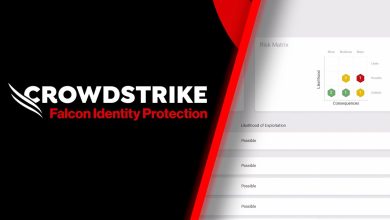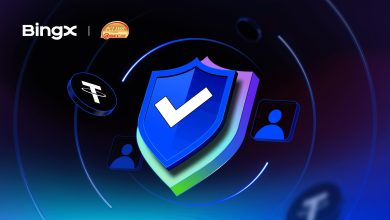Three Ways CISOs Can Use Microsoft Copilot for Security to Strengthen Defences

by Micah Heaton, Executive Director, Managed Security Center of Excellence at BlueVoyant

For CISOs and their teams, the pressure is immense. The cybersecurity landscape is rapidly evolving. A single phishing click can trigger a devastating cyberattack and unfortunately, the blame often falls on CISOs. Staying ahead of threats requires constant vigilance and adaptation and investing in the right tech that constantly evolves is therefore critical. Microsoft Copilot for Security is emerging as a powerful ally for CISOs and management, by automating tasks and providing real-time threat intelligence.
This article uncovers three critical ways in which Copilot for Security strengthens the overall security posture but also alleviates the pressure on CISOs, allowing them to focus on strategic initiatives that drive business growth.
Clear and Complete Incident Reporting
Businesses are faced with safeguarding against increasingly sophisticated cyber threats while navigating a complex regulatory framework for incident disclosure. One of the primary challenges for CISOs is ensuring that cyber incidents are reported accurately and comprehensively. Copilot doesn’t just highlight key details like the attack timeline or who the bad guys were, it even gauges the urgency of the situation and predicts future threats. Stakeholders get the information they need fast, empowering CISOs to effectively communicate and prioritise actions. Incident reports are comprehensive and provide:
- Summarisation: Copilot condenses lengthy incident reports and logs into concise summaries. It highlights critical details such as the timeline of events, initial compromise, tactics used by attackers, and mitigation measures. This ensures that stakeholders receive clear and actionable information quickly.
- Sentiment Analysis: By gauging the tone and sentiment expressed in incident reports or discussions, Copilot helps CISOs comprehend and convey the urgency and seriousness of the situation effectively.
- Impact Analysis: Copilot gathers and analyses data to determine the operational and financial impact of a cyber incident, along with the time and cost required for remediation. This helps in assessing the overall damage and planning recovery actions.
- Temporal Analysis: Capturing the duration of the attack, frequency over time, and patterns indicating potential coordinated campaigns, Copilot provides more context to reports and sharpens prevention plans.
- Visualisation: With the ability to generate graphs, charts, timelines, and heatmaps, Copilot helps stakeholders quickly grasp the incident’s scope and impact, making complex data more accessible and actionable.
- Trend and Predictive Analysis: Identifying trends and patterns that may indicate emerging threats or recurring vulnerabilities, Copilot predicts future threats based on historical data and threat intelligence, enabling proactive security measures.
Build Plans to Halt Threats Before They Start
Cybersecurity governance is no longer just about reacting to threats. Today, CISOs are prioritising proactive measures to ensure technology aligns with business objectives and minimises the risk of attacks. Threat prevention plans are crucial and help to defend information systems, networks, data, and workflows from a wide range of cyber threats. By leveraging AI tools like Microsoft Copilot for Security, organisations can develop robust, adaptive strategies to anticipate and prevent attacks, ultimately increasing their preparedness and minimising potential damage. This proactive approach allows businesses to focus on their core goals without the constant fear of a cyber assault disrupting their operations.
- Attack Simulation: The Copilot simulates various cyber-attack scenarios, capturing and assessing response times and readiness. This helps in identifying gaps and improving response strategies.
- Process and Procedure Development: Analysing the results of simulated or actual incidents, Copilot helps determine necessary processes and procedures to mitigate future threats more effectively.
- Vulnerability Reduction: By identifying what allowed an incident to occur, Copilot helps create processes to prevent similar vulnerabilities from being exploited again.
- Policy and Compliance Analysis: Ensuring that threat response plans align with regulatory requirements, industry standards, and best practices, Copilot assists in maintaining compliance.
- Training and Awareness: Copilot includes training modules with simulations in the prevention plan, ensuring team members know how to identify and respond to various cyber threats.
- Automation: Designing new automation triggers for specific types of cyber-attacks, Copilot enhances the efficiency and speed of threat response.
- Maintenance: Periodically reviewing prevention and response plans with Copilot ensures alignment with the current environment, regulatory requirements, and operational procedures.
Upskilling the Security Team
Microsoft Copilot for Security can assist in upskilling security team members and help advance their careers while improving the overall security posture of the organisation. Copilot frees security analysts from tedious tasks, allowing them to focus on career development. It offers personalised training, interactive learning experiences, and real-time performance assessments, ensuring teams stay sharp on the latest threats.
CISOs and their management teams have many responsibilities that go beyond day-to-day threat detection and response. Microsoft Copilot for Security equips CISOs with the tools to navigate the complex world of cyber threats, ensuring their organisations remain secure and compliant.




